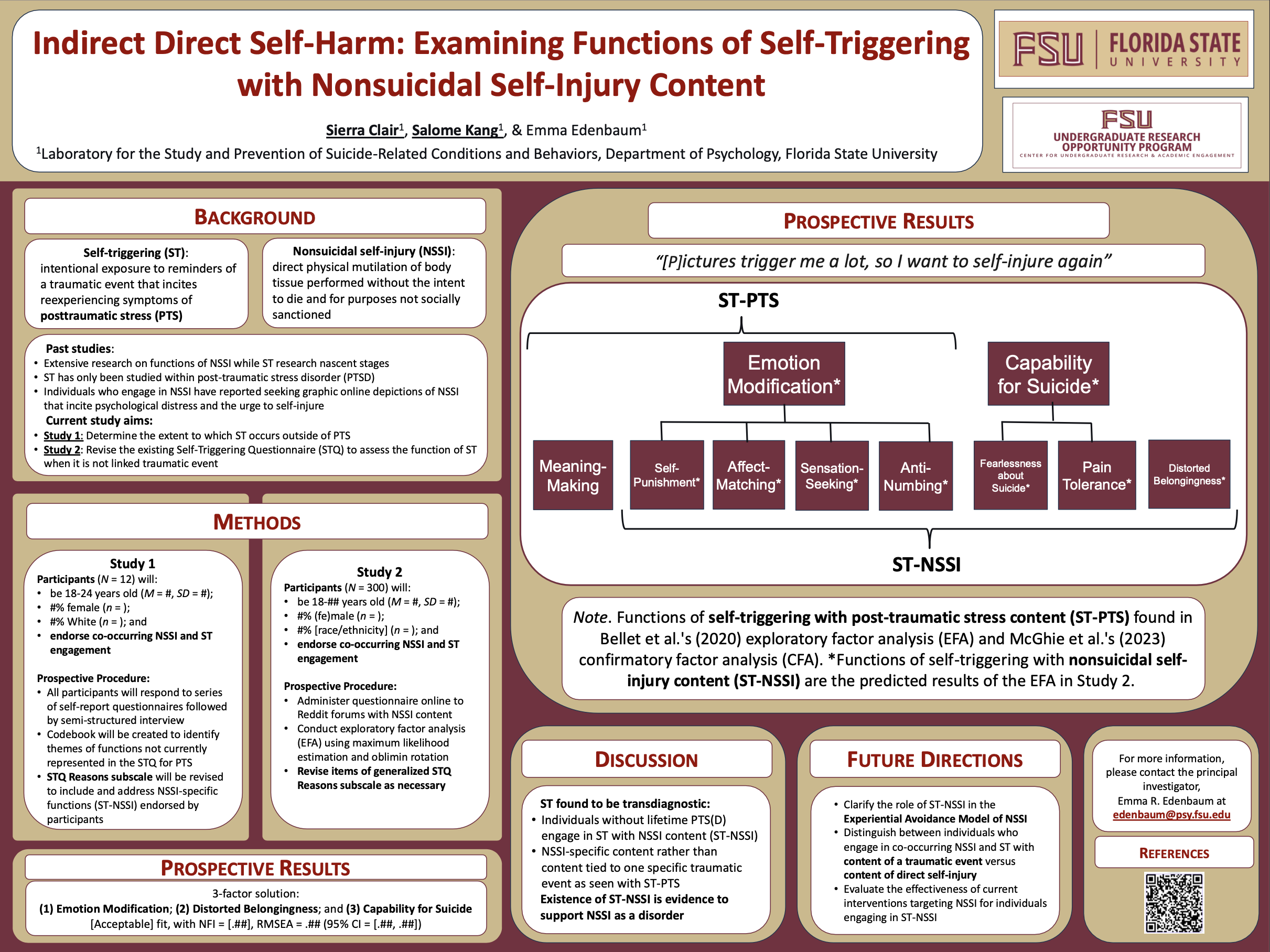Research Symposium
25th annual Undergraduate Research Symposium, April 1, 2025
Salome Kang Poster Session 3: 1:45 pm - 2:45 pm/ Poster #211

BIO
Hello, my name is Salome Kang, and I am a first-year psychology major from Orlando, Florida. My research interests stem from my passion for advocating against psychiatric malpractice, which led me to join the Laboratory for the Study and Prevention of Suicide-Related Conditions and Behaviors. I plan to continue researching clinical psychology to help develop new approaches for ethical treatment in psychology-related medical fields. Beyond research, I am involved in FSU’s Mental Health Council and the Korean American Student Association.
Indirect Direct Self-Harm: Examining Functions of Self-Triggering with Nonsuicidal Self-Injury Content
Authors: Salome Kang, Emma EdenbaumStudent Major: Psychology
Mentor: Emma Edenbaum
Mentor's Department: Department of Psychology Mentor's College: College of Arts and Sciences Co-Presenters: Sierra Clair
Abstract
Self-triggering (ST) is a subcategory of mental diagnosis where individuals intentionally expose themselves to triggering stimuli, thereby placing themselves in a negative mental state. ST is a new concept within the field and has mainly been focused on its relationship with post-traumatic stress disorder (PTSD). However, it is hypothesized that ST also occurs in nonsuicidal self-injury (NSSI) disorders. This study aims to clarify the relationship between ST and NSSI and expand the ST construct beyond trauma PTSD. Participants were recruited from Florida State University and online forums (e.g., Reddit), who then participated in the Inventory of Statements about Self-Injury (ISAS) and a Suicidal Risk Assessment (SRA). This mixed-methods, cross-sectional study consists of two phases. (1) Semi-structured interviews (N = 12) will be used to refine the Self-Triggering Questionnaire (STQ) and (2) an exploratory factor analysis (EFA) using survey data from at least 300 online participants with the finalized version of the STQ. Our projected qualitative findings suggest that ST in NSSI can overlap with functions such as sensation-seeking, attention-seeking, compulsivity, and self-punishment. Factor analysis will be able to identify motivations such as distorted belongingness and the acquired capability for suicide. Odds ratio is expected to indicate that factors of distorted belongingness will be the strongest predictor of the severity of ST. These findings suggest ST does occur outside of PTSD, specifically within NSSI disorders. Recognizing ST as a symptom of NSSI could refine psychological assessments and identify effective treatments for ST in non-trauma populations.
Keywords: psychology, clinical psychology, suicide, self-harm


